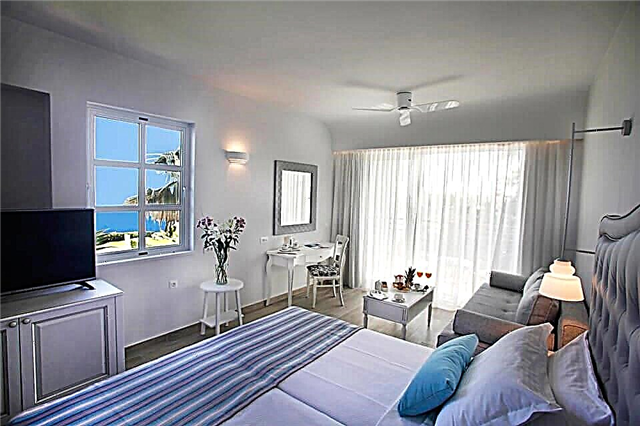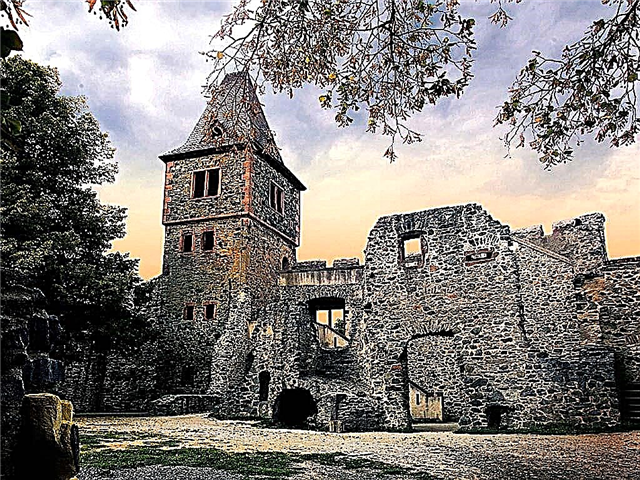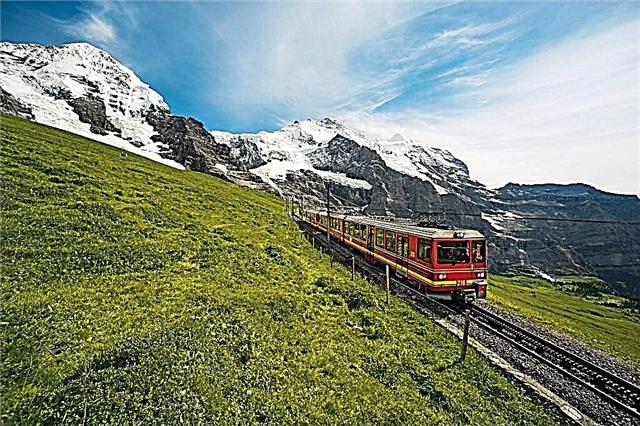Address: Moscow Red Square
Foundation date: 1917 year
Coordinates: 55 ° 45'12.9 "N 37 ° 37'10.1" E
Content:
One of the most famous graveyards of the capital is located next to Red Square. The unusual necropolis has the status of a memorial and causes a lot of controversy. Some demand that the remains of those who were buried there were transferred to ordinary cemeteries, while others argue that everything should be left unchanged and kept as a piece of the country's history.

The history of burials on the territory of the Kremlin
It is not known exactly when the first burials appeared in the Moscow Kremlin. Over the centuries-old history, there have been many cemeteries in the city center. It was customary to bury commoners near the walls of the Kremlin. On the section from Nikolskaya to Spasskaya towers, there were 15 graveyards - according to the number of churches that existed inside the Kremlin.
The richer and more eminent citizens were buried inside the Kremlin walls. Grand dukes, tsars and members of royal families found their last refuge in the Archangel Cathedral, church patriarchs - in the Assumption Cathedral, in the very center of the Kremlin.
In 1557, Tsar John IV the Terrible personally participated in the burial of the famous Moscow holy fool Basil the Blessed. The saint was buried in the cemetery of the Trinity Church in the Kremlin moat, where later, at the will of the sovereign, the majestic Pokrovsky Cathedral was built. Churchyards at the Kremlin churches existed until the middle of the 17th century, and then burials began to be carried out in ordinary city cemeteries.
Mass graves
During the days of the October armed uprising, which took place in 1917, there were many victims in the city. In early November, the new authorities asked Muscovites through a newspaper to submit information about everyone who fought on the side of the Bolsheviks. When the dead were collected, two large graves 75 m long were dug between the Kremlin wall and the tram lines that ran along Red Square.

The solemn funeral took place on November 9. Several funeral processions came from different parts of the city to Red Square, and the next day 238 coffins were buried in the graves. Church authorities objected to a mass funeral outside the Kremlin without a funeral service, and in order to protect the participants in the funeral, they were armed with rifles. Lenin performed at the funeral ceremony, and a choral cantata was performed on the verses of the poet Sergei Yesenin.
Of the first buried people, only 57 people have survived to this day. The fact is that many of the participants in the October events could not be identified, since their bodies were destroyed by the explosions.
Over the next years, several more mass graves appeared near the walls of the Kremlin, where people who died a natural death, who died during disasters or from terrorist acts were buried. In 1921, victims of an accident on the Moscow-Tula railway were buried here. Self-taught engineer Abakovsky designed a railcar with an aircraft engine, capable of speeds up to 140 km / h and called it "air carriage". Near Serpukhov, the car went off the rails, as a result of which 7 people died, including the designer himself.
Every year, on the Day of International Workers' Solidarity - May 1 and on the anniversary of the October Revolution, a guard of honor was set up near the necropolis, and the soldiers took the oath. The practice of burials in mass graves near the Kremlin wall continued until 1928. In total, more than three hundred people are buried in the mass graves, however, the names of only 110 of them are reliably known.

Personal niches and graves
The first to be buried separately from everyone was Yakov Sverdlov, who died in 1919. By that time, he was serving as chairman of the All-Russian Central Executive Committee, that is, he was the formal head of the republic.
In November 1926, the Soviet ambassador Leonid Borisovich Krasin, who was one of the initiators of the construction of V. Lenin's mausoleum, died in London. Krasin was cremated, and the urn with his ashes was placed in the necropolis. Beginning with this funeral, the tradition of solemn burials of all those who were honored to lie near the Kremlin wall was born.
In 1927, the first crematorium began operating in the capital. After that, with rare exceptions, the cremated remains were buried near the Kremlin. The urns were walled up under the slabs located along the Kremlin wall. Until 1937 - to the right, and later - to the left of the Senate Tower.
Among those who rest in urns, it is worth mentioning the writer Maxim Gorky, Lenin's younger sister Maria Ulyanova and his wife Nadezhda Krupskaya, one of the organizers of the mass repressions of the Red Army Lev Mekhlis, military leader Georgy Zhukov, scientist Mstislav Keldysh and pilot Valery Chkalov. Next to them lie the first Soviet cosmonaut Yuri Gagarin and the famous designer Sergei Korolev. Until the mid-1970s, marshals of the USSR were buried in the necropolis.

The grave of I. V. Stalin
In some cases, the deceased were buried without cremation. M. Frunze, Y. M. Sverdlov, A. A. Zhdanov, F. E. Dzerzhinsky, K. E. Voroshilov, S. Budyonny, M. Kalinin, L. Brezhnev, M. Suslov were buried in twelve graves near the wall. Yu. Andropov and I. Stalin. KU Chernenko was the last to be buried in a separate grave, but after 1985 the practice of such burials was discontinued.
Regardless of whether the deceased was cremated or not, residents of the country received an official message about the "funeral near the Kremlin wall." It is noteworthy that burial in such an honorable place has always been awarded to those who were in mercy in power. Disgraced politicians - Nikita Khrushchev, Anastas Mikoyan and Nikolai Podgorny got a place in another part of Moscow - at the Novodevichy cemetery.
Today, more than 400 people are buried near the wall. It is noteworthy that 50 of them are citizens of other countries. Almost all of them were communists or prominent figures in the political movement. Near the Kremlin there was a place for the American John Reed, the German woman Clara Zetkin and the Japanese Sen Katayama.
Necropolis decoration and funeral traditions
The first landscaping of the new cemetery was carried out in the spring of 1918. The ground above the burials was leveled and decorated with turf. Flower beds were laid out on the territory, electric lighting was installed, and a memorial plaque was fixed on the Senate Tower.

In 1924, the wall was planted with trees and bushes. In 1931, the rows of lime trees were replaced with slender blue spruces. The trees were constantly monitored, and if any of them dried out, a new one was immediately planted instead.
Monuments and tombstones of the same type did not appear in the cemetery immediately, but only in the 1930s. After the war, under the leadership of the architect Isidor Aronovich Frantsuz, individual graves and mass graves were combined into a common architectural ensemble and connected to the guest tribunes of the mausoleum. The gravestones were decorated with red granite and bronze laurel branches, and the names of the victims appeared on the slabs near the mass graves.
The last alteration of the necropolis was carried out in the 1970s. To the decoration were added inclined banners of red granite, stone flower vases and laurel wreaths. At the same time, the ornamental shrubs growing near the graves were removed, and blue spruces were planted in their place.
Mourning days were announced several times in the country, when state flags were lowered and entertainment programs were not broadcast on television. Cinemas, concert venues and theaters were closed in all cities. Schoolchildren did not attend classes, and mourning rallies were held in factories and enterprises. Some of the funerals were shown on TV for all citizens of the country to see.
The military post near the mausoleum existed until 1993, and then it was abolished. True, after 4 years, a guard of honor was set up near the Tomb of the Unknown Soldier.

Information for tourists
On ordinary days, visitors are not allowed to the necropolis.Near the burial place, officers and soldiers are constantly on duty, stopping everyone on the way to the cemetery. Only those who enter the mausoleum, which is open on all days except Monday and Friday, from 10.00 to 13.00, can get to the burial places. After visiting the mausoleum, tourists walk along the Kremlin wall. However, as in the mausoleum itself, it is not recommended to stay here.
Relatives of the deceased are allowed into the necropolis on all days, during daylight hours. They are allowed to stand near graves or memorial plaques and lay flowers.
How to get there
The graves near the Kremlin wall are easily accessible on foot from the Teatralnaya, Okhotny Ryad, Aleksandrovsky Sad, Revolution Square or Kitay-Gorod metro stations.











